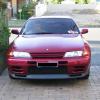R34 Gtr Ball Bearing Turbos
Announcements
-
Similar Content
-
Latest Posts
-
By drifter17a · Posted
Thanks, plan is to drain all fluid tomorrow and do smoke test to find out the leak. Appreciate your help and want to understand how the system work. So cooling is achieved by the long loop not any rad? The diagram seems to suggest it connects to somewhere inside the cabin and I thought that is a cooler inside firewall. If you look at the diagram it seems to show it connects to something inside firewall. I tried chasing it but not easy unless I take loads off i am confident pump is good as fluid goes in and it gets soft( steering) but as soon as I turn engine off , loads of bubble come to surface and overflow. When engine is on , fluid level is below minimum but when off it shoots off and thinking it is sucking air in. I suspect aluminium pipe may have a crack line or whole smoke test with no fluid should be a good start and if needed will remove the pump In addition, the one going under the engine bay is high pressure line and one directly connecting from pump to resorvoir is return/ low pressure? finally I searched and suggestion is to use dexron 2 but that is discontinued so bought dexron 3 as all research suggest it is compatible and shouldn’t cause any issues/ blow seals. I bought two liter of dexron 3 motul atf -
Don't worry about. Just don't try to drive hard enough to make boost and you'll be fine.
-
Yes. This has already been said. It is a loop of hardline in front of the radiator. Because.... the pump is on the LHS and the steering rack hydraulic connections are where they always are on a RHD steering rack....on the RHS. The high pressure line goes down under the engine, along the crossmember, like it does on all Skylines. Don't just throw expensive braided hoses/other kits at it. Work out what is wrong and fix that.
-
Still got the afm on the intake, clamps are shut tight, only loose hose is the one that goes from the j pipe towards the IACV, since it's next to impossible to find a factory hose and the barbs are different sizes (I'm still using clamps on this hose to try and help it seal on the iacv side) I've ordered parts to make up the hotside of the intercooler pipes, I'll plumb it in and see what happens in a few days I suppose The turbo's internally gated, can I just unscrew the tension rod to let the gate open?
-




Recommended Posts
Create an account or sign in to comment
You need to be a member in order to leave a comment
Create an account
Sign up for a new account in our community. It's easy!
Register a new accountSign in
Already have an account? Sign in here.
Sign In Now